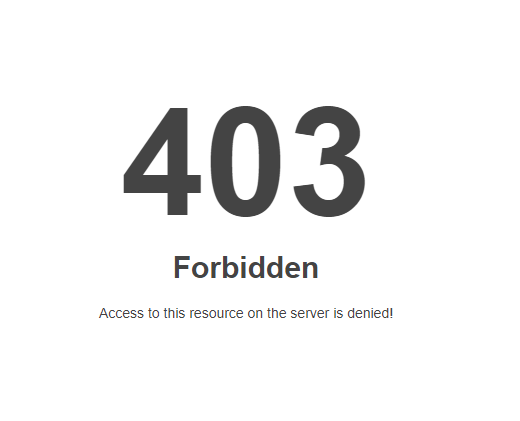- This topic has 1 reply, 1 voice, and was last updated 1 year, 4 months ago by .
-
Topic
-
When you see the WordPress 403 forbidden error, it means that your server understands the request you’ve made, but for some reason, it’s refusing to fulfill it. The error can be quite frustrating, particularly when it prevents access to the WordPress admin dashboard, as this hampers your ability to manage your website effectively.
In such a scenario, you would encounter the 403 forbidden WordPress admin error message. This means that while the server acknowledges your request to access the WordPress admin panel, it’s denying you the necessary permissions to do so. This can occur due to numerous reasons such as incorrect file permissions, faulty plugins or themes, or server configuration issues.
In essence, the WordPress Admin 403 Forbidden error is a signal that there’s a communication breakdown between the server and your WordPress website, barring you from accessing and managing your site. The good news is that, while it can be annoying, this error is usually fixable by identifying and addressing the underlying issues causing it.
Incorrect file permissions
Each file and folder in your WordPress installation carries a set of permissions. These permissions, which are defined by three numbers (like 644 or 755), determine who can read, write, and execute the files or folders. The first digit refers to the owner’s permissions, the second to the group’s permissions, and the third to everybody else’s permissions.For example, ‘755’ implies the owner can read, write, and execute, while everyone else can only read and execute. If these permissions are incorrectly configured, the server may deny access, causing a 403 Forbidden Error.
Faulty plugins or themes
WordPress plugins and themes are developed by various authors and sometimes, they may contain bugs or conflicting code. If you’ve recently installed or updated a WordPress plugin or theme, and the 403 Forbidden Error emerged subsequently, then there’s a good chance that the plugin or theme is the culprit. Compatibility issues with your WordPress version or other installed plugins could also trigger this error.Server configuration issues
Often, the 403 Forbidden Error can be a result of server configuration settings that are incorrectly configured. Your website’s .htaccess file, a critical file used to define your site’s configuration, can cause this error if it has incorrect directives. Similarly, if the server itself is misconfigured, it may reject access requests, leading to the error.Security plugins
Security plugins are designed to protect your WordPress site by blocking IP addresses that they consider to be a potential threat. However, in some cases, these plugins may end up blocking your IP address, thereby causing the 403 Forbidden Error.Hotlink protection
Hotlink protection prevents other websites from using your site’s bandwidth by directly linking to files and images on your website. If this feature is improperly configured, it may block legitimate requests, leading to the 403 error.
- You must be logged in to reply to this topic.

